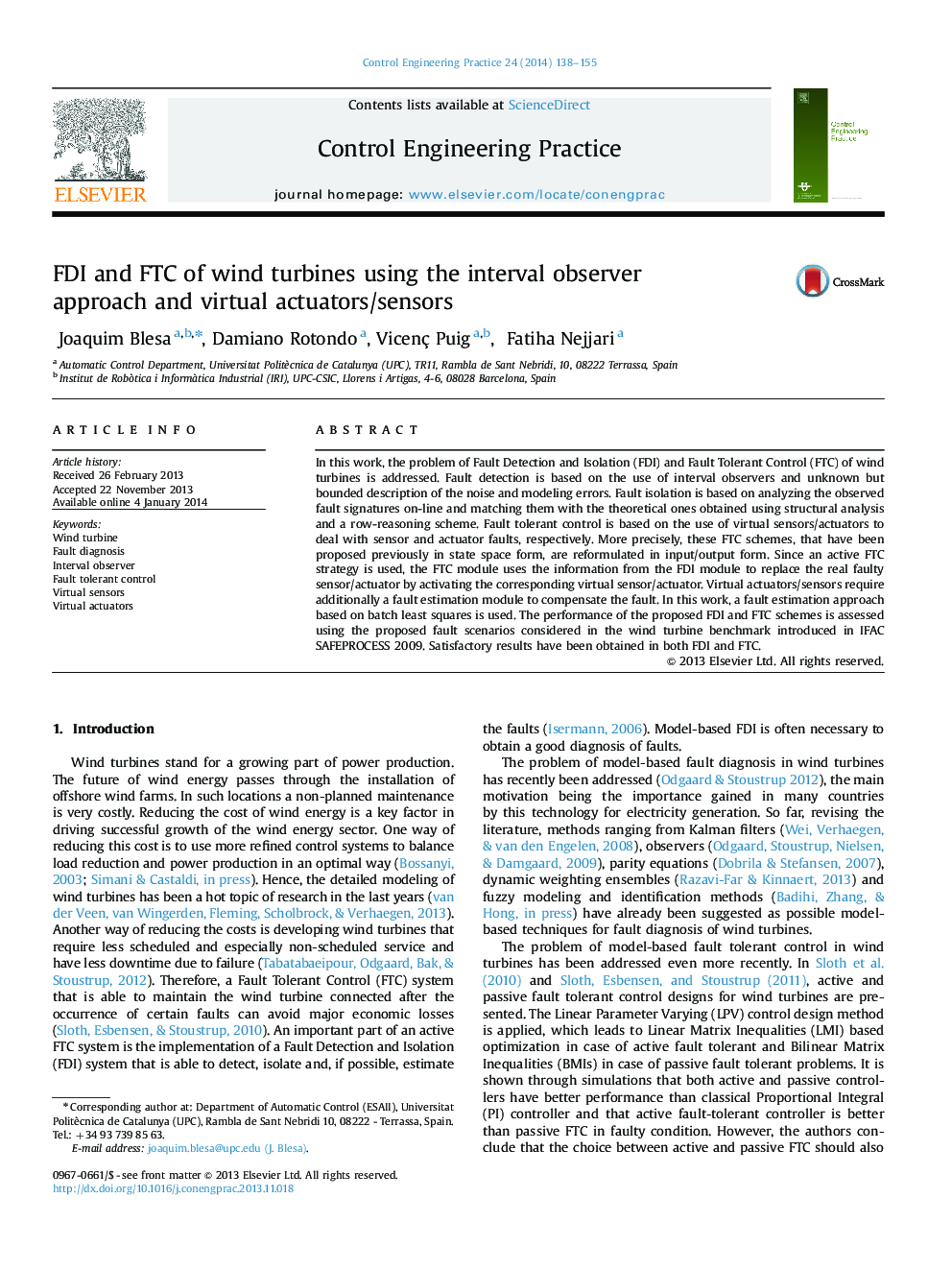| Article ID | Journal | Published Year | Pages | File Type |
|---|---|---|---|---|
| 700105 | Control Engineering Practice | 2014 | 18 Pages |
•Fault detection is based on the use of interval observers and unknown but bounded description of the noise.•Fault isolation is based on analyzing and matching the observed fault signatures with the theoretical ones using arrow-reasoning scheme.•FTC is based on the use of virtual sensors/actuators to deal with sensor and actuator faults, respectively.•Virtual actuators/sensors require additionally a fault estimation module based on batch least squares to compensate the fault.•Performance of the proposed FDI and FTC schemes is assessed using the fault scenarios of a wind turbine benchmark.
In this work, the problem of Fault Detection and Isolation (FDI) and Fault Tolerant Control (FTC) of wind turbines is addressed. Fault detection is based on the use of interval observers and unknown but bounded description of the noise and modeling errors. Fault isolation is based on analyzing the observed fault signatures on-line and matching them with the theoretical ones obtained using structural analysis and a row-reasoning scheme. Fault tolerant control is based on the use of virtual sensors/actuators to deal with sensor and actuator faults, respectively. More precisely, these FTC schemes, that have been proposed previously in state space form, are reformulated in input/output form. Since an active FTC strategy is used, the FTC module uses the information from the FDI module to replace the real faulty sensor/actuator by activating the corresponding virtual sensor/actuator. Virtual actuators/sensors require additionally a fault estimation module to compensate the fault. In this work, a fault estimation approach based on batch least squares is used. The performance of the proposed FDI and FTC schemes is assessed using the proposed fault scenarios considered in the wind turbine benchmark introduced in IFAC SAFEPROCESS 2009. Satisfactory results have been obtained in both FDI and FTC.
